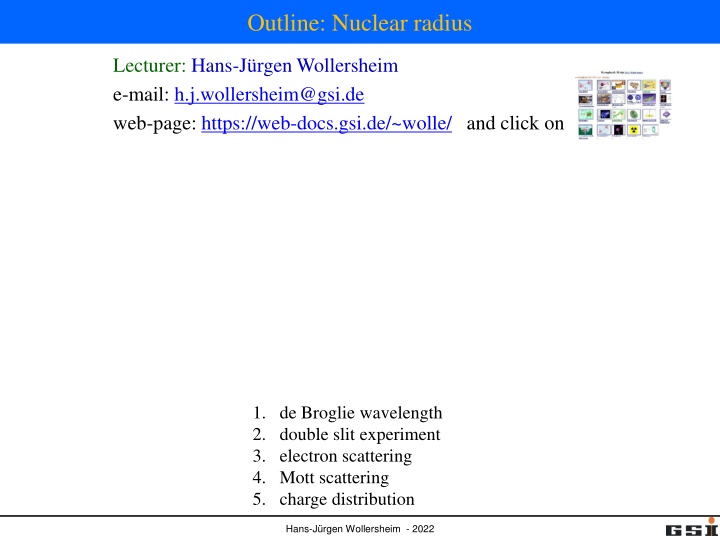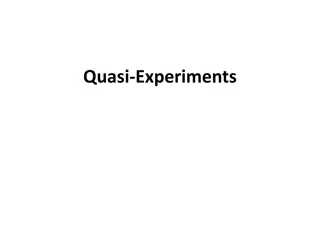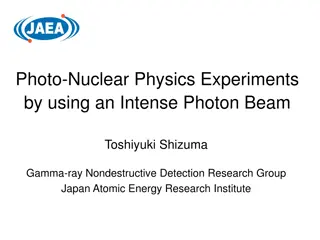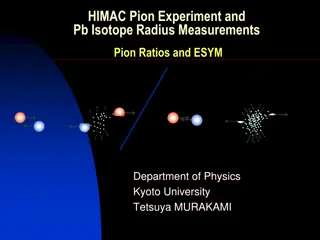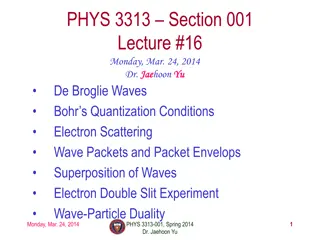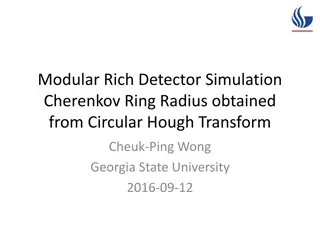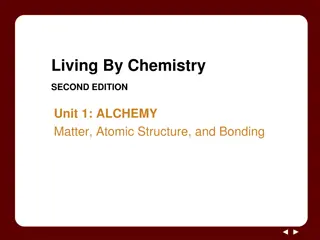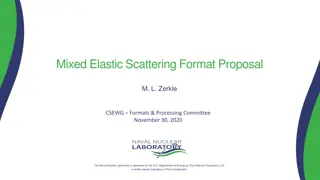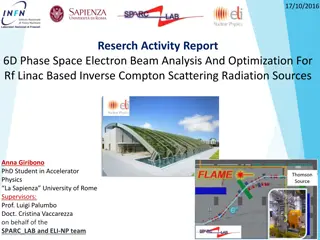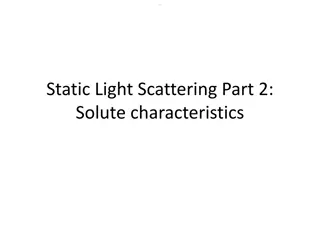Insights into Nuclear Radius and Electron Scattering Experiments
Delve into the realm of nuclear physics with a focus on nuclear radii and electron scattering experiments led by lecturer Hans-Jürgen Wollersheim. Explore topics such as de Broglie wavelength, double-slit experiment, Mott scattering, charge distribution, and the use of electrons as probes to measure nuclear radii. Understand how electrons interact with nuclei and the experimental methods employed to study their properties.
Download Presentation

Please find below an Image/Link to download the presentation.
The content on the website is provided AS IS for your information and personal use only. It may not be sold, licensed, or shared on other websites without obtaining consent from the author.If you encounter any issues during the download, it is possible that the publisher has removed the file from their server.
You are allowed to download the files provided on this website for personal or commercial use, subject to the condition that they are used lawfully. All files are the property of their respective owners.
The content on the website is provided AS IS for your information and personal use only. It may not be sold, licensed, or shared on other websites without obtaining consent from the author.
E N D
Presentation Transcript
Outline: Nuclear radius Lecturer: Hans-J rgen Wollersheim e-mail: h.j.wollersheim@gsi.de web-page: https://web-docs.gsi.de/~wolle/ and click on 1. de Broglie wavelength 2. double slit experiment 3. electron scattering 4. Mott scattering 5. charge distribution Hans-J rgen Wollersheim - 2022
Nuclear Radii Clinton Davisson & Lester Germer (1925) Bildergebnis f r davisson germer Scattered electrons form diffraction pattern characteristic of waves 2? ? ? ??? ? ? = ??? Si-detector with slit cover Wavelength found from Planck s constant and momentum: Luis de Broglie (1924): matter particles such as electrons have wave-like properties ? = ? ? ? = ? 1239.84 ??? ?? ?= = ???? ????+ 2???2 ???? ????+ 2?0?2 Electrons at keV energies: interfere with Angstrom (~10-10m) scale atomic lattice structure m0= 0.511 [MeV] = 6.58 10-22[MeV s] Hans-J rgen Wollersheim - 2022
Double slit electron diffraction d Interference minima when path length from holes differs by half wavelength: ?2 ? ??? ???? = Hans-J rgen Wollersheim - 2022
Electron scattering on nuclei How do we measure nuclear radii? Use electrons as probe point like particles, experience only electromagnetic interaction and not strong (nuclear) force, probe the entire nuclear volume. What energy do we need? Hint: consider required de Broglie wavelength ? 1239.84 ??? ?? = 5 [fm] for Ekin ~ 250 [MeV] ? = = ???? ????+ 2???2 ???? ????+ 2?0?2 Study angular distribution of scattered electrons e-scattering on 12C observe diffraction effects analog with optics The momentum transfer is given by: ? = 2? ??? ? 2 = 2? ? ??? ? 2 The cross section describes the scattering on a point-like particle: ?? ? =0.13 ? 1 1 ?2 ???2 ? 2 ?2 ???4 ? 2 840??? 197??? ?? ??? 52 2 = 1.8 ?? 1 ? = Hans-J rgen Wollersheim - 2022
Mott scattering Mott scattering for relativistic projectiles with spin (no recoil effect) ?? ? ?? ? ?? ? ???2? 1 ?2???2 = ? 2 = 2 ???? ??? ?????? ??? ?????? Nevill F. Mott 1905-1996 for = v/c 1 Central collision ( = 1800, = 0) of an electron (s = ) d / d(cos ) Electron spin has to perform a spin-flip backward scattering heavily suppressed Hans-J rgen Wollersheim - 2022
Electron scattering on nuclei Experimental cross section: ?? ? ?? ? ? ?2 2 = ???? F(q2) is the form factor, which is the Fourier transform of the charge distribution The form factor of a homogenously charged sphere: 3 ? ?2= ??3 ??? ?? ?? ??? ?? Comparison with experimental cross section on 12C q R = 4.5 R = 2.5 [fm] for q = 1.8 [fm-1] Hans-J rgen Wollersheim - 2022
Isotope effect of the nuclear radius From the position of the cross section minima for 48Ca and 40Ca it is obvious that the nuclear radius R increases with mass number A. scattering angle Hans-J rgen Wollersheim - 2022
Charge distribution experimental charge distributions t = 2.4 fm 16O 40Ca 48Ca Fermi distribution: ?0 ? ? = 1 + ???? ? ? 90Zr 132Sn 208Pb with c 1.07 A1/3fm, a 0.54 fm Root mean square radius: ?2= ?0 ? 1 3 ??? ?0= 0.94 ?? ????= 0 0.17 nucleons / fm3 Equivalent radius of a sphere: 5 3 ?2 ? 1.21 ? ?2= 1 3 Hans-J rgen Wollersheim - 2022
Conclusion of nuclear radius measurements 1. The central density, is (roughly) constant, almost independent of atomic number, and has a value about 0.17 fm-3. This is very close to the density of nuclear matter in the infinite radius approximation, 3 ?0= 3 4??0 2. The skin depth , is (roughly) constant as well, almost independent of atomic number, with a value of about t =2.4 fm typically. The skin depth is usually defined as the difference in radii of the nuclear densities at 90% and 10% of maximum value. 3. Scattering measurements suggest a best fit to the radius of nuclei: RN= r0 A1/3 r0 1.22 [fm] 1.2 1.25 is also common 4. A convenient parametric form of the nuclear density was proposed by Woods and Saxon ?0 with t = a 4 ln3 a = 0.54 fm ??? = 1 + ???? ?? ? Hans-J rgen Wollersheim - 2022
